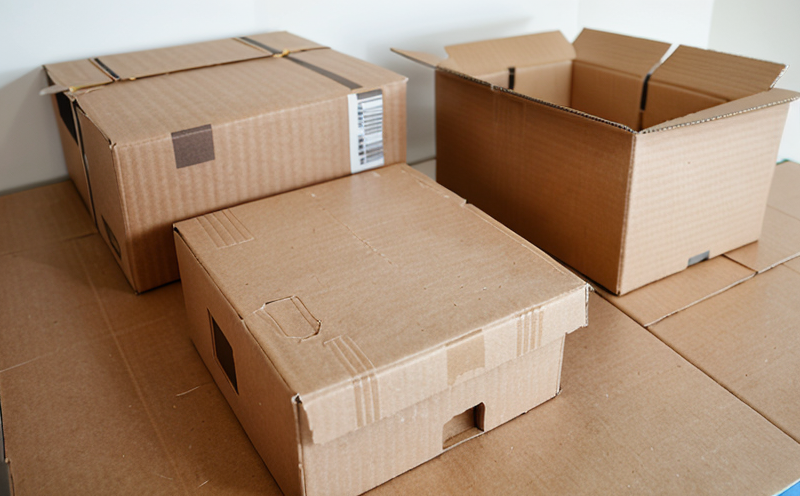ISO 5629 Tear Resistance of Paper
The ISO 5629 standard is widely recognized in the packaging sector as a pivotal tool for assessing the tear resistance properties of paper and cardboard. This service is particularly valuable for quality managers, compliance officers, R&D engineers, and procurement teams who are responsible for ensuring that materials meet rigorous international standards.
Tear resistance is crucial because it determines how easily a material can be torn or punctured during handling, storage, and distribution. In the context of packaging, this property ensures that products remain secure in transit and prevent leakage of contents. This service helps companies comply with international regulations while also enhancing product quality and safety.
The ISO 5629 test is designed to measure the resistance of paper or cardboard to tearing forces along a specified direction. The tear resistance is measured by subjecting a specimen cut according to specific dimensions provided in the standard, typically using a pre-punched hole at one end. A constant rate of extension is applied until failure occurs, and the force required for this is recorded.
The test setup involves specialized equipment that applies controlled stretching forces on the paper or cardboard sample. The apparatus must be capable of maintaining a consistent speed during the test to ensure accurate measurement. The specimen preparation includes precise cutting and conditioning to eliminate moisture content variations which could otherwise skew results.
Understanding the tear resistance of materials is essential for several reasons:
- To prevent product damage during transportation and handling.
- To enhance consumer safety by ensuring secure packaging.
- To comply with international standards that ensure consistent quality across borders.
- To optimize material usage, reducing waste while maintaining structural integrity.
Test results are reported in units of force per unit width. This metric provides a clear indication of the tear resistance capability of different paper or cardboard samples under standardized conditions. The interpretation of these values helps manufacturers make informed decisions about their material specifications, thereby improving overall product performance and reliability.
The importance of ISO 5629 cannot be overstated in today’s globalized market where conformity with international standards is a key factor influencing consumer trust and regulatory compliance. By leveraging this service, businesses can ensure they are meeting the highest industry standards, thus gaining a competitive edge in both domestic and international markets.
Scope and Methodology
| Test Setup | Description |
|---|---|
| Tear Testing Machine | A machine capable of applying a controlled stretching force to the sample at a specified speed. |
| Specimen Cutting | Samples are cut according to the dimensions specified in ISO 5629, ensuring consistency across tests. |
| Test Procedure | Description |
|---|---|
| Conditioning | The specimen is conditioned to achieve a specific moisture content before testing begins. |
| Testing | A constant rate of extension is applied until the sample fails, measuring the force required at failure. |
International Acceptance and Recognition
ISO 5629 is recognized globally for its reliability in assessing tear resistance of paper and cardboard materials.
This standard has been adopted by numerous countries as a benchmark for quality assurance, ensuring that products meet the highest international standards.
Many industries rely on ISO 5629 to ensure consistent performance across different regions and markets, thereby fostering trust among consumers and stakeholders.
The widespread acceptance of this standard underscores its importance in maintaining quality control processes worldwide. Compliance with ISO 5629 not only enhances product reliability but also helps companies navigate the complexities of international trade standards effectively.
Environmental and Sustainability Contributions
Evaluating tear resistance through ISO 5629 is not just about quality assurance; it plays a significant role in promoting sustainability initiatives within packaging industries. By optimizing material strength and durability, manufacturers can reduce waste associated with product damage during transport.
This service supports environmental goals by encouraging the use of more efficient materials that last longer without compromising on performance. Such practices contribute to reducing carbon footprints and resource depletion linked to frequent replacements due to inadequate tear resistance characteristics.





